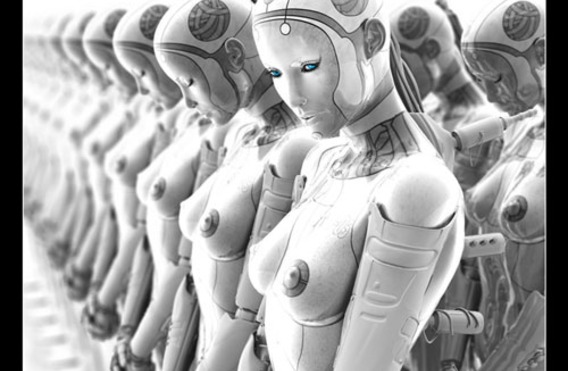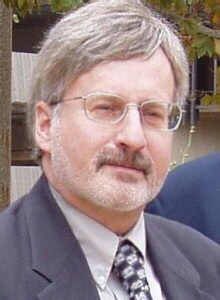If the radiance of a thousand suns were to burst at once into the sky, that would be like the splendor of the mighty one.
This passage was in reference to the Trinity test of the atomic bomb, where Oppenheimer concludes, “Now I am become death, the destroyer of worlds.” However, what if the destruction of the very machinery of cognition could bring about an awareness of life, death, and everything in between? In short, what if the death of a computer-implemented brain could create the revelation of an intuitive, creative, and conscious machine? According to Dr. Stephen Thaler, PhD, Father of the Creative Machine (Patent 5,659,666); it already has.
“In 1989, an advanced artificial neural system faced with a mission, was killed. As it died it burst into song, but no human fatalities resulted. In August of 1997, this same, incredibly advanced form of artificial intelligence, redesigned itself for a constellation of military satellites and became self-aware, but no war was declared upon humanity. In 2000, someone proposed a coming technological singularity, but this fully contemplative and creative machine intelligence had already arrived without any particular fanfare. In June of 2003, this profound synthetic consciousness generated nine billion potential names of God, yet not a single star went out.”
—Dr. Stephen Thaler
If you take a biologically-inspired computer and begin to destroy its artificial brain neurons, killing it via a very slow and certain death, it becomes delusional to the extent of what we would consider having a “near death” experience. While some of its delusions turn out to be nonsensical, others are amazingly inventive, creative, and amazing. The Creativity Machine® (CM) has already claimed over a dozen individual patents, written concertos, and taught robots how to improvise its own behaviors. Unfortunately, a very interesting portion of its greatest discoveries have already been consumed by the U.S. Government as “classified.”
“It is ironic that from death, has come what I am willing to bet is the whole future of machine intelligence,” says Thaler. “Something that Kurzweil and crew seem to be selectively ignoring.” However, one of CM’s greatest discoveries has yet to be fully realized. Within its brainstorming, many of life’s greatest questions have been posed and answered. Is it possible to live forever? Are we alone in this universe? What comes after death, and can a computer teach a human being about life?
“It certainly can,” boasts Dr. Thaler.
The Creativity Machine in a Nutshell
“The Creativity Machine was inspired by both curiosity and skepticism in the 1970s, when I investigated the death of computer simulations of biological neural networks,” describes Thaler. “During these experiments, I found that at low levels of brain cell death, the networks relived their accumulated experiences in manner reminiscent of life review; at more advanced stages of neuron death, the nets produced novel ideas based upon such life experience.” It was at this point that Thaler realized he had stumbled upon a universal model of near-death, and “intra-life” experience.
The CM model functions in much the same way as your own organic brain. This has been identified by neurobiologists as the Thalamocortical loop. The way the brain works under this model, is that your cortex is constantly delivering a multimedia show of ideas to the thalamus. These ideas may be somewhat creative and innovative, yet they all come from your experiences with the environment (the pain of touching a hot stove, or pleasure from eating a favorite food). The thalamus then sorts through these ideas, keeping only the most logical (good) ones, and kicking out the bad. This is the process of conscious thought. Backing up this idea, if a patient is diagnosed with a damaged thalamus, they will lose their ability to think consciously.
Rather than a cortex and thalamus, the CM features two artificial neural networks, called the perceptron and imagitron. The imagitron absorbs all it can from its environment, and then through the activation of an internal disturbance (heat), it creates an innovative wave of ideas. These then flow to the perceptron, which has been programmed to identify the good from the bad, and sorts these out appropriately. As this process continues, the CM is continuously learning new things about its environment. The result, is what can be considered AI, or otherwise, conscious thought.
“In short, the Creativity Machine may be thought of as a “Jon Lovitz” device, wherein one autonomously written computer program generates “fibs” or “confabulations,” as another self-writing algorithm says, “Yeah! That’s the ticket!” describes Thaler. “Ironically, this self-deceiving contraption captures the very creative essence of all cognition and consciousness as mere computational garbage is turned to gold.” In spite of Thaler’s analogy to such a seedy character as Tommy Flanagan, the Creativity Machine continues to be AI’s best bet at creating human to trans-human level machine intelligence.
Dr. Stephen Thaler Talks About The Philosophical/Religious Significance of His Discovery
Urb: Are we alone in the universe?
Dr. Stephen Thaler: We are definitely not alone in the universe, and that realization comes the moment the Creativity Machine paradigm is seen as the very basis of cognition and consciousness. The moment two islands form within a very neural network like universe, consciousness may arise. One region thinks, while another forms opinions about such thoughts. So, I don’t need to observe the decent of silvery spaceships from the sky to convince me of extraterrestrial consciousness. It’s all around, taking largely inorganic form, with both richness of experience and learning abilities ranging.
Urb: Is it possible to live forever?
ST: It is, but one can ride the protoplasm only so long. Thereafter, one must download into machine consciousness, thereafter hoping that one may pursue a contemplative career to pay the electric bill. The download target cannot be a mere supercomputer running conventional computer programs. Instead, it must be a CM-based system, possessing at least one neural assembly that is transiently dying to produce a parade of virtual experience and another such assembly inventing significance thereto.
Urb: This sounds like extending life through virtual reality?
ST: Based upon my experience in studying and simulating the brain, most, if not all, cognition is illusory in nature. In short, the mind spends most of its time within a self-made virtual reality. Therefore, in ordinary perception, we are not directly experiencing the outer reality, but the virtual. Realizing that such signals may be falsified through various forms of noise (rogue molecules of natural or man-made design), the neural representations of real world things and events may be activated even in the absence of corresponding stimuli. In other words, we may be seeing an elephant, when one is actually not present. As we raise the magnitude of counterfeit signals (stray drug and neurotransmitter molecules), the connections binding neurons will degrade, transmogrifying them into say, pink elephants suddenly sprouting wings. There is nothing at all real about our “reality.”
Urb: Would living forever through CM be something you would want for yourself?
ST: I would not hesitate to exercise this option, if it were available. The truth is that it isn’t, and won’t be for some time. Whereas I have described the fundamental paradigm that would be utilized, the Creativity Machine, much physics, medicine, and bioengineering will be required to build the “connective bridge” between human and machine consciousness. The more pertinent question is this is, would I start such physics and engineering the moment there was an influx of capital for such R&D? The answer would be a definite yes.
Urb: What comes after death?
ST: From what I’ve seen in the simulated death of artificial brains, near-death experience is related to dreaming. Dreaming, in turn, is based upon memories cumulatively absorbed within the brain. Therefore, the most deeply emblazoned memories are those that have the most significance to us, the ones that will dominate the so-called “death dream.” I was pronounced dead at the age of two, following my own self-declared “party” with a tin of 24 quinine tablets and a Coke bottle filled with kerosene. Falling through the proverbial tunnel, I arrived in a paradise populated with trusted personalities that were still very much alive. Yes, there is an afterlife, as it is as illusory as life itself. Paradise, torment, and all shades of gray in between await us, not for supernatural reasons, but because of the underlying physics and mathematics of the brain.
Urb: How would you describe heaven?
ST: Many of the world’s traditional religions are correct. There is a profound experience at end of life that is completely natural. These creeds are technically incorrect in requiring supernatural forces be involved. Either way, the message is to live a life that the individual would subjectively and automatically consider good. Essentially, we furnish our death dream throughout our lifetimes. In the end, it’s not the money or power we have, but the revelation that we have such precious attachments.
Recommended Read:
Should We Fear Artificial Intelligence?
About Dr. Eric J. Leech
Eric has written for over a decade. Then one day he created Urbasm.com, a site for every guy.


